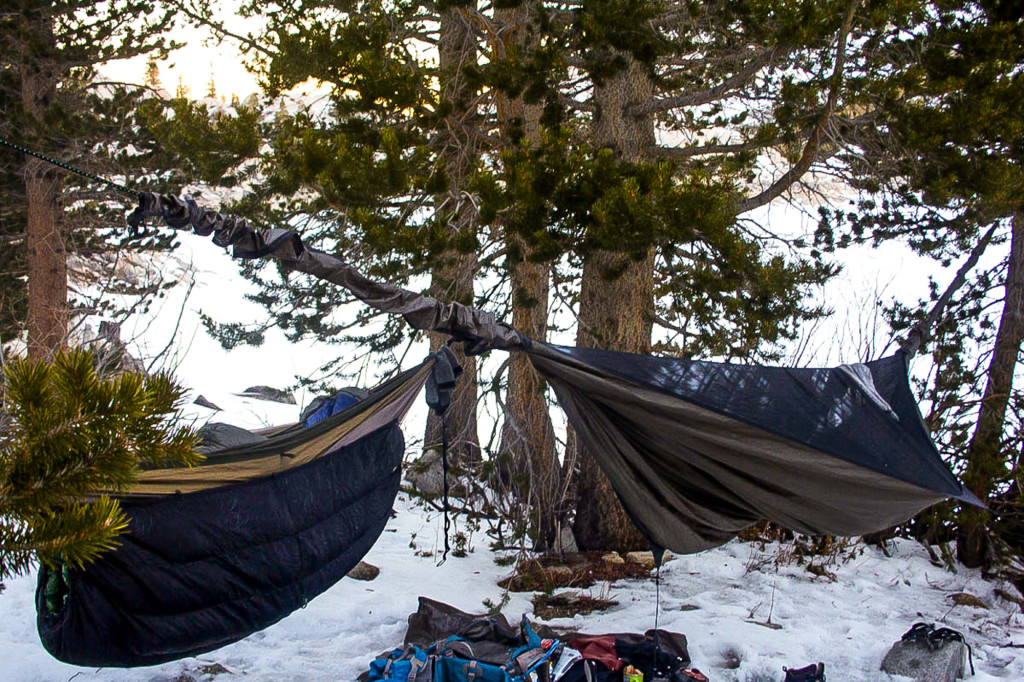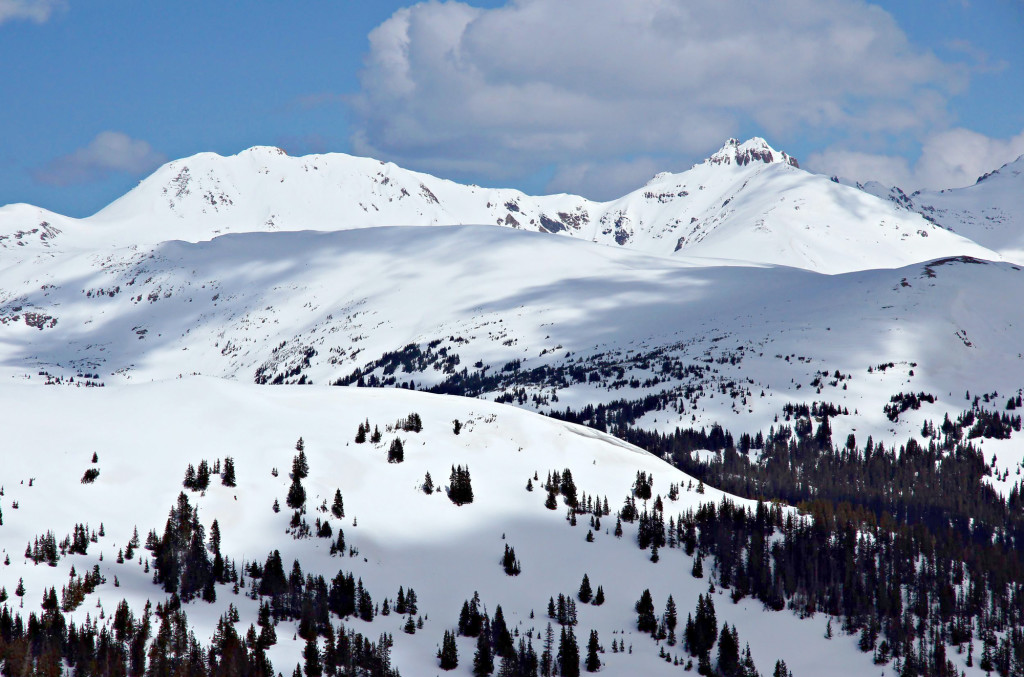RECOIL OFFGRID Survival “The 3 W’s” of Surviving Winter in a Hammock
In This Article
A few months ago, we posted an article called “Hammocks 101”, and it caught the attention of the team at Serac hammocks. Wilson Lin, one of the company’s co-founders, actually sent us an email telling us that he liked the story, and we soon started chatting with him about the viability of hammocks in survival situations. Obviously, hammocks are good for camping—but should survival-minded individuals consider including hammocks in their bug-out bags or emergency kits?
Our discussion with Serac led to two things. First, the company kindly offered to send us one of their hammocks to test, so we could see its viability as a survival tool first-hand. That review is still in the works, but we’ll be posting it here on OFFGRIDweb soon, along with our full impressions on the company’s one and only product.
Secondly, on a more theoretical note, we got to talking about how hammocks fare in cold conditions. As a manufacturer, Serac knows a thing or two about preparing its products for the cold and dealing with the elements. So, we asked if their staff could share some tips on how to deal with snow, moisture, wind chill, and other seasonal factors during winter in a hammock.

Jeff Zhang, Wilson’s business partner and the other co-founder of Serac, gave us permission to share his exclusive advice about hammock camping in the dead of winter. These tips are based on Jeff’s years of experience, both as a manufacturer of hammocks, and as an avid outdoorsman and camper. We’ve dubbed them the Three Ws of Winter Hammocking.
A lot of people think of hammocking as a summer activity. Sunshine, warm breezes, and a chilled beer at your side. There’s no doubt that that’s one way to enjoy your hammock. But for some of us, hammocking is an all-season activity—including the winter. There are plenty you can do to make a trip in the snow just as comfortable as any other season. When planning a camping trip out in the cold, there are three things you should plan for.
When hammocking in the winter, the most important thing to plan for is insulation. Staying warm should be your number one priority. You will need both top and bottom insulation, much like camping in a tent. For top insulation, a sleeping bag rated for winter temperatures will work well. Some of us might want to shave some extra weight and go with a similarly rated top quilt instead. Either option will work well to keep you nice and toasty in a hammock.
Don’t forget your bottom insulation. You’ll want to weigh your options. For some, a sleeping pad works well enough to insulate their backside. A sleeping pad is effective, lightweight and doesn’t break the bank.
However, watch out! Sleeping pads are also vapor barriers and this could be disastrous—especially in the dead of winter. You release a lot of moisture when you sleep. With a vapor barrier on your backside plus extra layers in the cold, moisture can’t easily escape. This can leave you waking up wet and sweaty in your sleeping bag. The light, down sleeping bag that we love so much during warmer seasons begins to lose its insulating abilities as the condensation builds up.
A better (but costlier) option is an under quilt rated for subzero temperatures. Under quilts hang on the outside of your hammock and contain down or synthetic filling. An under quilt allows you much more freedom of movement inside your hammock. Even without a top quilt, you can leave your sleeping bag unzipped and be free to toss and turn as you please.
Under quilts come in both full-length and ¾-length sizes. Full length under quilts cover the entire length of your hammock and insulate you from head to toe. The idea behind ¾-length under quilts is to keep your upper body well insulated and keep your feet propped up on some clothes or backpack. As long as your under quilt is rated for temperatures below freezing, you will stay nice and warm.
 If there’s a chance of snow, make sure you pick a rainfly with sufficient coverage. In heavy storms, a smaller diamond rainfly won’t provide enough wind cover on your sides. For winter hammocking, consider getting a large rainfly with many anchor points. A hexagonal or catenary rainfly would work well. Having the extra anchor points allows you to stake your tarp closer to your hammock. This makes a more effective wind barrier.
If there’s a chance of snow, make sure you pick a rainfly with sufficient coverage. In heavy storms, a smaller diamond rainfly won’t provide enough wind cover on your sides. For winter hammocking, consider getting a large rainfly with many anchor points. A hexagonal or catenary rainfly would work well. Having the extra anchor points allows you to stake your tarp closer to your hammock. This makes a more effective wind barrier.
If you’re caught in a blizzard, there are rainflys that completely envelop your hammock. This effectively turns your hammock into a floating tent, complete with doors and walls on all sides. With this floating fortress, you won’t need to worry about snowfall burying you. You’ll be happily suspended above the snowfall, and won’t have to think about digging your way out later.
In the winter, be extra vigilant of potential widowmakers [Ed. Note: dead branches caught precariously high in trees, with the potential to fall and cause injury or even death]. The snow and ice that can accumulate overnight can add enough weight to send a branch tumbling down. This is true for all winter campers, but doubly so for hammockers who rely on trees for anchor points. Bring extra-long straps on your trip, as well as rope to act as extenders. Set up your hammock so that it is a healthy distance away from any tree branches. Make sure that the trees you pick do not have any dead or sickly-looking branches—these are the most likely to snap from the weight of any snowfall.
Don’t be afraid to venture out into the wilderness because it’s winter. Your favorite getaways can look like a whole new world under a sprinkle of snow.
By Jeff Zhang of Serac Hammocks
We always enjoy talking to subject matter experts from various fields about their experiences, since there’s a lot we can learn from their knowledge. Jeff’s tips above tell us that using a hammock in a winter survival setting is definitely possible—you just need to take the right precautions.

Don’t venture into the outdoors in winter without being prepared, regardless of which type of shelter...
As we’ve said before, hammocks can be a viable alternative to tents and other types of shelters, especially since they’re often light, compact, and easy to fit into a bug-out bag. However, don’t head out into the wilderness with a hammock during the cold months without first preparing for the potential dangers: loss of warmth, inclement weather, and widowmaker tree branches.
 STAY SAFE: Download a Free copy of the OFFGRID Outbreak Issue
STAY SAFE: Download a Free copy of the OFFGRID Outbreak Issue
No Comments